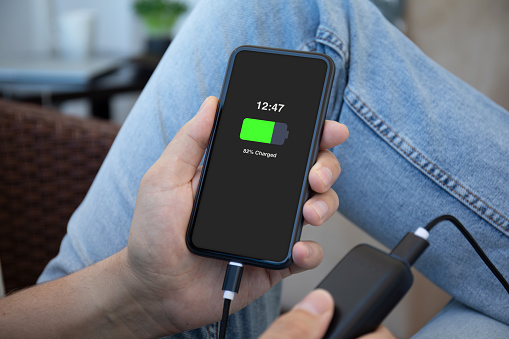10 Best Social Media AI 3D Object Generators in 2023
Looking for the best AI 3D object generators for social media in 2023? Look no further! In this article, we'll explore the top 10 AI-powered tools that are revolutionizing the way we create and share 3D content on social media platforms. These advanced generators combine the power of artificial intelligence with intuitive interfaces to make 3D modeling and animation accessible to everyone. Whether you're a game developer, a graphic designer, or simply a tech enthusiast, these tools offer a range of features to bring your ideas to life in three dimensions. From text-to-3D conversion to image-to-3D rendering, these generators offer unmatched precision and realism. Discover the pros and cons of each tool, explore their unique features, and find the perfect fit for your creative needs. Stay ahead of the curve and harness the power of the best social media AI 3D object generators in 2023 to captivate your audience with stunning 3D content.
1. Spline
Is Spline the best social media AI 3D object generator? Find out why this innovative tool is making waves in the industry with its real-time collaboration and interactive experiences.
What's Spline? Spline is a free 3D design software that allows users to create interactive web experiences right in the browser. Its standout feature is real-time collaboration, making it ideal for team projects.
With Spline, you can enjoy features such as 3D modeling and animation, interactive experiences, material layers, 3D sculpting, physics and game controls, and video textures and components.
Features of Spline
- Real-time collaboration
- 3D modeling and animation
- Interactive experiences
- Material layers
- 3D sculpting
- Physics and game controls
- Video textures and components
Pros of Spline
- Real-time collaboration facilitates teamwork and project management.
- User-friendly interface with intuitive tools for 3D modeling and animation.
- Wide range of features to create interactive web experiences.
- Drag and drop functionality for easy asset integration.
Cons of Spline
- Limited compatibility with certain browsers and devices.
- Advanced features may require a learning curve for beginners.
- Some users may prefer offline software for more control over their projects.
- Limited export options compared to professional 3D software.
2. Masterpiece Studio
This is another best social media AI 3D objects generator. Masterpiece Studio is an AI-powered text-to-3D generator that simplifies the 3D modeling process. Using sophisticated Natural Language Processing (NLP) technology, it transforms a user's descriptive language into fully functional 3D models and animations. Its user-friendly interface and accessibility make it suitable for users of all skill levels.
Features of Masterpiece Studio
- AI-powered text-to-3D generation
- User-friendly interface
- Natural Language Processing (NLP) technology
- Generates fully functional 3D models and animations
- Simplified 3D production process
- Simple UI suitable for all skill levels
- Quick and efficient generation of 3D content
Pros of Masterpiece Studio
- AI-powered text-to-3D generation enables quick and easy creation of 3D models.
- Simple and intuitive user interface, making it accessible to beginners.
- Uses advanced NLP technology to accurately interpret user descriptions.
- Generates fully functional 3D models and animations with minimal input.
Cons of Masterpiece Studio
- Limited customization options compared to manual 3D modeling.
- May require additional editing for complex or specific design requirements.
- Relies heavily on the accuracy and clarity of user descriptions.
- Limited support for advanced animation and rigging features.
3. Meshcapade
Meshcapade is a leading AI text-to-3D generator that excels in creating high-quality 3D models from text inputs. Its unified platform is compatible with all game engines and graphics applications, making it versatile for various avatar requirements. Meshcapade simplifies the creation of 3D avatars, allowing users to focus more on their main offerings.
Features of Meshcapade
- AI-powered text-to-3D generation
- High-quality 3D models from text inputs
- Compatible with all game engines and graphics applications
- Designed for easy creation of 3D avatars
- Unified platform for avatar requirements
- Streamlined 3D model creation process
- Saves time and energy in asset production
Pros of Meshcapade
- AI-powered text-to-3D generation enables efficient creation of high-quality 3D models.
- Compatibility with all game engines and graphics applications provides flexibility.
- Streamlined process for creating 3D avatars, saving time and effort.
- Offers a unified platform with access to curated 3D databases and customized creations.
Cons of Meshcapade
- - Limited customization options compared to traditional 3D modeling software.
- - Complex or intricate designs may require additional manual editing.
- - Less control over the intricacies of the 3D model compared to manual modeling.
- - Reliance on AI algorithms may result in occasionalinaccuracies or misinterpretations of text inputs.
4. Moch
Mochi is an AI-powered text-to-3D generator specifically designed for game development. It automates asset production and features a robust text-to-image mapping capability. With Mochi, users can generate complex 3D models swiftly using natural-language commands, making it a valuable tool for game developers and digital artists
Features of Moch
- AI-powered text-to-3D generation
- Plugin for game developmen
- Automates asset productio
- Robust text-to-image mapping capabilit
- Simple to operat
- Generates complex 3D models swiftl
- Valuable tool for game developers and digital artistsyeynt
Pros of Moch
- AI-powered text-to-3D generation streamlines the design process for video games
- Automation of asset production saves time and effort for game developers
- Robust text-to-image mapping capability ensures accurate and visually appealing models
- Simple operation and natural-language commands provide freedom of expression
Cons of Moch
- Limited customization options compared to manual 3D modeling
- Complex or specific design requirements may require additional manual editing
- Reliance on AI algorithms may occasionally result in unexpected outcomes
- Learning curve for understanding and utilizing advanced features of the software
5. Luma AI
Luma AI pushes the boundaries of 3D object production by generating photorealistic 3D models from textual input. Its groundbreaking "Imagine" function allows users to create 3D models of any concept, regardless of their background in 3D modeling or graphics programming. Luma AI also excels in rendering live video streams into immersive 3D environments
Features of Luma AI
- AI-powered text-to-3D generation
- Ability to produce photorealistic 3D models
- Can render a live video stream into a 3D environment
- No background in 3D modeling or graphics programming required
- Intuitive and user-friendly interface
- Supports various social media platforms
- Extensive library of pre-designed 3D objects
Pros of Luma AI
- AI-powered text-to-3D generation produces photorealistic 3D models
- Ability to render live video streams into 3D environments enhances visual experiences
- No prior background in 3D modeling or graphics programming required
- Expands creative possibilities for users by bringing any concept into 3D reality
Cons of Luma AI
- May require additional manual editing for complex or specific design requirements
- Advanced features may have a learning curve for beginners
- Reliance on AI algorithms may occasionally result in unexpected outcomes
- Limited support for advanced animation and rigging features
6. 3DFY AI
3DFY AI utilizes advanced generative AI technology to produce high-quality 3D models from textual descriptions. By automating the creation of 3D content, it eliminates the need for labor-intensive manufacturing or scanning methods, making 3D content creation accessible to all
Features of 3DFY AI
Here are seven features of 3DFY AI that make it one of the best social media AI 3D object generators:
- AI-powered text-to-3D generation
- Advanced generative AI
- Eliminates the need for human labor in developing 3D content
- Access to curated 3D databases of digital items
- Rapid generation of 3D assets
- Integration with various platforms and software
- High-quality output and realistic 3D models
Pros of 3DFY AI
- AI-powered text-to-3D generation enables the creation of high-quality 3D models
- Advanced generative AI technology produces accurate and diverse 3D content
- Eliminates the need for labor-intensive manufacturing or scanning methods
- Provides access to curated 3D databases or generates virtual items based on instructions
Cons of 3DFY AI
- Limited customization options compared to manual 3D modeling
- Complex or specific design requirements may require additional manual editing
- Reliance on AI algorithms may occasionally result in unexpected outcomes
- Advanced features may have a learning curve for beginners
7. Ponz
Ponzu is an AI-powered tool that revolutionizes the creation of 3D assets for developers and designers. It generates high-quality, photorealistic textures with customizable painting styles, allowing users to bring their 3D models to life with individuality
Features of Ponz
Here are seven features of Ponzu that make it one of the best social media AI 3D object generators:
- AI-powered texture generation
- Quick and easy generation of high-quality, photorealistic textures
- Fully customizable painting styles
- State-of-the-art AI algorithms
- Independent adjustment of specular and diffuse lighting
- Realistic and visually appealing results
- Seamless integration with social media platforms
Pros of Ponz
- AI-powered texture generation produces high-quality, photorealistic textures
- Quick and easy generation of textures enhances the efficiency of asset creation
- Fully customizable painting styles enable users to express their creativity
- State-of-the-art AI algorithms ensure accurate and visually appealing textures.
Cons of Ponzu:
- Limited support for advanced texture editing and manipulation compared to dedicated software.
- Dependency on AI algorithms may occasionally result in unexpected or undesirable texture outcomes.
- Advanced features may have a learning curve for beginners.
- Integration with specific 3D modeling or game development software may require additional setup or plugins.
8. NeROIC
Another best AI 3D object generators for social media is the NeROIC. What is it all about? NeROIC is an AI-powered tool that can create 3D models from images. By converting images or videos into interactive 3D environments, NeROIC brings static content to life and provides a unique viewing experience.
Features of NeROIC
- AI-powered image-to-3D generation
- Converts video into a 3D environment
- Constructs fully interactive 3D environments
- Time and effort efficient
- Creates realistic 3D avatars
- Uses sensitive information like a client image
- Provides 360-degree views of created avatars
Pros of NeROIC:
- AI-powered image-to-3D generation transforms static images into dynamic 3D representations.
- Conversion of video into interactive 3D environments enhances visual storytelling.
- Fully interactive 3D environments allow users to explore and interact with the content.
- Time and effort efficiency compared to traditional 3D modeling methods.
Cons of NeROIC:
- Quality of 3D models may be limited by the quality and complexity of the input images or videos.
- Dependency on AI algorithms may occasionally result in unexpected or inaccurate 3D representations.
- Advanced features may have a learning curve for beginners.
- Integration with specific 3D modeling or game development software may require additional setup or plugins.
9. DPT Depth
DPT Depth is a promising technique that utilizes deep convolutional networks to extract depth information from images and create precise 3D representations. It excels in generating accurate point clouds and meshes for real-world scenes.
Features of DPT Depth
- AI-powered image-to-3D generation
- Uses a deep convolutional network
- Can train more precise point clouds and 3D meshes
- Exceeds human-level accuracy
- Excellent inference time for real-time 3D scene reconstruction
- User-friendly interface
- Supports a wide range of image formats
Pros of DPT Depth:
- AI-powered image-to-3D generation produces precise point clouds and 3D meshes.
- Deep convolutional networks improve accuracy compared to traditional methods.
- Exceeds human-level accuracy in depth estimation.
- Excellent inference time makes it suitable for real-time 3D scene reconstruction.
Cons of DPT Depth:
- Requires access to a deep convolutional network model for optimal performance.
- Performance may vary depending on the quality and complexity of the input images.
- Advanced features may have a learning curve for beginners.
- Limited support for advanced texture mapping and material properties.
10. RODIN
RODIN is an AI-powered 2D-to-3D generator that specializes in creating realistic 3D avatars. By utilizing client images and providing 360-degree views, RODIN enables the creation of lifelike 3D characters based on personal likeness.
Features of RODIN
- AI-powered 2D-to-3D generation
- Creates realistic 3D avatars
- Uses sensitive information like a client image
- Provides 360-degree views of created avatars
- User-friendly interface
- High-quality 3D modeling
- Advanced customization options
Pros of RODIN:
- AI-powered 2D-to-3D generation produces realistic 3D avatars.
- Utilizes client images for a personalized and immersive viewing experience.
- 360-degree views enhance the realism and interactivity of the avatars.
- Simplifies and speeds up the process of creating 3D digital avatars.
Cons of RODIN:
- Limitations in the fidelity and accuracy of 3D avatars based on the quality of the client images.
- Advanced features may have a learning curve for beginners.
- Limited support for advanced animation and rigging features.
- Reliance on AI algorithms may occasionally result in unexpected or less accurate representations.
Conclusion
In conclusion, the world of social media AI 3D object generators is rapidly evolving, and in 2023, we have witnessed the emergence of innovative tools that have transformed the way we create and share 3D content. From Spline's real-time collaboration to Masterpiece Studio's text-to-3D generation, these generators offer a plethora of features that cater to different creative needs.
The pros of these tools include their ability to automate complex processes, provide access to curated 3D databases, and generate realistic models. They empower game developers, graphic designers, and artists to bring their ideas to life with ease. However, it's essential to consider the cons, such as potential dependency on AI algorithms and a learning curve for beginners.
By exploring the 10 best social media AI 3D object generators in 2023, individuals can unlock a new dimension of creativity and innovation. Whether you're looking to create interactive web experiences, design 3D avatars, or convert images and text into 3D models, there's a tool tailored to your specific requirements.
Stay informed about the latest advancements in this field as technology continues to evolve, and embrace the power of AI to transform your social media presence with captivating 3D content.





.jpg)
.gif)

.jpg)



